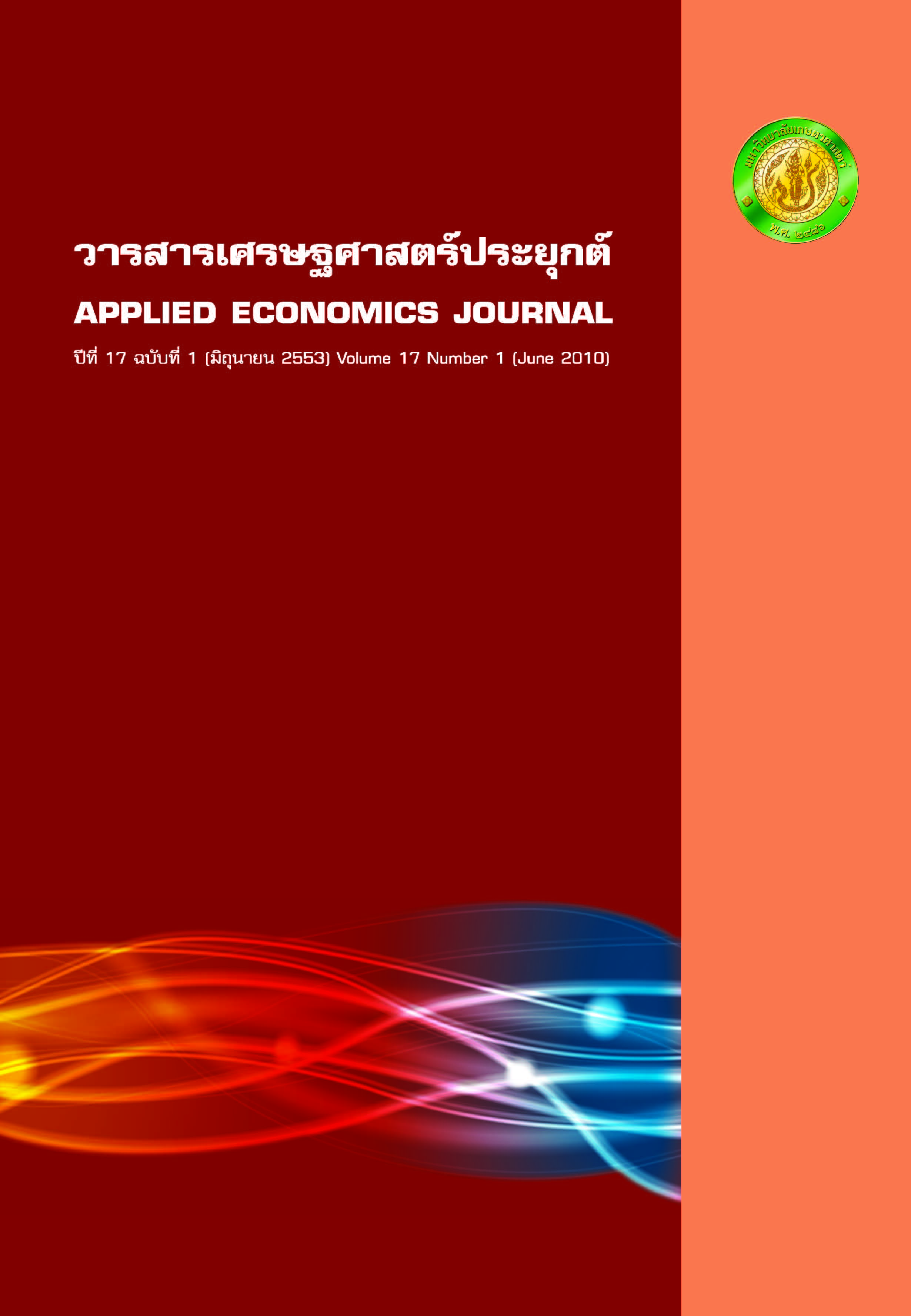Two Decades of the Rice Economy of Thailand
Main Article Content
Abstract
บทคัดย่อ
บทความนี้อธิบายถึงการเปลี่ยนแปลงในภาคการผลิตข้าวของไทยและโครงสร้างรายได้ของครัวเรือนเกษตรกร รวมถึงผลกระทบจากการเปลี่ยนแปลงที่มีต่อการกระจายรายได้และความยากจนในช่วงปีการผลิต 2530/31 ถึง 2550/51 ทั้งนี้พบว่าแม้ผลผลิตข้าวเพิ่มขึ้นมาโดยตลอด แต่ต้นทุนการการผลิตก็เพิ่มขึ้นอย่างต่อเนื่องเช่นกัน ส่งผลให้ผลตอบแทนลดลง ดังนั้นการหาทางลดต้นทุนการผลิตโดยไม่ทำให้ผลผลิตลดลงเป็นแนวทางที่จะเพิ่มรายได้ให้กับเกษตรกร จึงควรส่งเสริมวิธีปฏิบัติในการลดต้นทุนการผลิตโดยไม่ทำให้ผลผลิตลดลง โดยเฉพาะการใช้เมล็ดพันธุ์และปุ๋ยเคมี เมื่อพิจารณาโครงสร้างรายได้ของครัวเรือนพบว่า แหล่งรายได้จากนอกภาคเกษตรนับว่ามีความสำคัญและมีสัดส่วนเพิ่มขึ้นเป็นลำดับ ขณะที่การปลูกข้าวยังเป็นแหล่งรายได้หลักของครัวเรือนในเขตพื้นที่ชลประทาน ส่วนการกระจายรายได้มีความไม่เท่าเทียมมากขึ้นในช่วงสองทศวรรษที่ผ่านมา โดยพบทั้งในรายได้จากข้าว รายได้จากการการเกษตรอื่นๆ และรายได้จากการรับจ้างในภาคเกษตร แต่ภาวะความยากจนของครัวเรือนเกษตรกรลดลง โดยในเขตพื้นที่ชลประทานอยู่ในภาวะที่ดีกว่าพื้นที่อื่นๆ
คำสำคัญ : ข้าว, การกระจายรายได้, ภาวะความยากจน
Abstract
This paper investigates the transitions in Thai rice economy and farm household income structure. It also describes the impacts of the changes on income inequalities and poverty indices during 1987/88 and 2007/08 crop years. The cost of rice production has continuously increased over time, contributing to declining returns despite increasing yields. This suggests that the most effective way to raise farmer income is to reduce their production cost without reducing yields. Practices should be promoted that reduce production costs and maintain yields, especially in the use of seed and fertilizer. As to household income structure, the non-agricultural sector contributed a significant and increasing proportion of the farm household’s income, except in irrigated areas where rice farming still contributes the major part of the total income of households. Incomeinequality increased over the two decades. This inequality occurred in the income from rice farming, but other sources of inequality were in the other farm income and agriculture hired labor income. Despite this growing inequality, there was an improvement in poverty situation during the period. The incidence of poverty was lower in irrigated development villages than in the other villages.
Keywords : rice, income distribution, poverty reduction
Article Details
The paper is published under CC BY-NC-ND, in which the article is freely downloaded and shared in its original form non-commercially and its citation details are identified.


